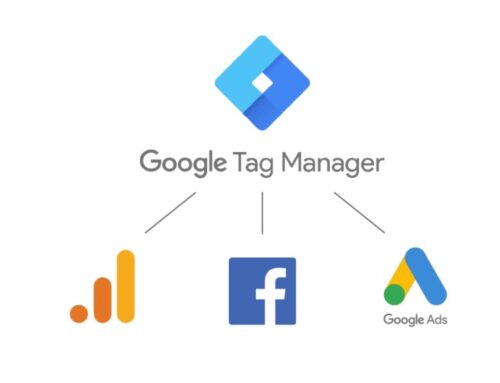
How to Plan an eCommerce SEO Strategy
Author : Hardeep Singh
May 16, 2025
One of the most important aspects of any online business is SEO. No matter how great your goods or services are, if no one believes you exist on the web, you will not earn any sales. Assuming you have an online business, SEO is logically one of your top marketing priorities.
Overall, the more people who discover your site through organic search, the more sales you’re likely to earn. However, how should you reply when organising your online business SEO strategy? How would it be best for you to ensure you’re doing all possible to gain traffic and conversions from Google and other search engines?
Here, we’ll walk you through the steps to follow as you plan your online company SEO campaign. Continue reading for more information on the most effective technique to work on your site’s perceivability and ranking.
Development of eCommerce SEO Strategy
Making an effective eCommerce SEO system may look daunting, but it does not have to be. This encounter will, indeed, need some time and effort on your part (and perhaps more than one attempt). However, with proper planning, your site should see strong results far sooner than expected. This is how you may start developing your SEO strategy:
1. Prioritising Web Pages
This is a question that many business owners ask themselves when they want their website traffic to be more engaged. The response: start with your most popular sites and work from there! Also, if you’re looking for strategies to optimise specific products or flagship offerings, start with what works well in terms of conversion rates. To have a thorough understanding of the boundaries, you may track your site’s statistics using Google Analytics.
2. Crafting a Workflow
Improving a website is challenging. To begin, make certain you’re completing all of the SEO requirements, such as selecting keywords and precisely adding metadata, so your content may rank effectively on online search tools. As a result, when people search for information in their area or on topics of interest to them, Google Algorithm will recommend your site more frequently. Creating a work procedure can help you manage the SEO aspects separately rather than doing things haphazardly.
3. Competitive Benchmarking
The goal of SEO is to have your site appear higher on Google searches. To accomplish this, you should analyse how the top ten web-based business places in your specialisation compare to yours, and then experiment with numerous methods to improve ranks for people searching for what they provide on the web!
For example, when people put something into Google like “hardware store” or even a specific item name, for example, “flowers,” they get a list of sites where a few offer price comparison-shopping services for those who are interested. Repeat these hunts to see how your competitors are seeking to capture the commercial core. This technique will aid you in establishing a benchmark, allowing you to understand how much work should be completed on the site and the content turn of events.
Best Practices for eCommerce SEO
To rank better on search engines like Google and Bing, you should streamline your site for better keywords. It is also essential that the content of each page supports these terms so that they appear when someone looks through them or visits our site using an SEO-friendly application like Chrome (for desktop) or Safari (for iPhone). Here are a few examples of mandated procedures:
1. The Choice of Keywords
Your product titles and descriptions don’t have to be overburdened with keywords, but they should mention your main catch somewhere on it. You may include this in the title, description, meta-information, or even alternate attributes if you’re feeling fearless. Try throwing some LSI keywords into them as well – similar terms that help Google comprehend what kind of page this is without having to read each word.
Make use of the power of keywords to your advantage. Before using a keyword, investigate it and learn how often people seek that term (catch the monthly Google trend).
Determine its competitors in the paid advertising area in terms of cost-per-click (CPC) values. This may be seen at any moment using outside devices such as (Semrush, Ahrefs, and so on.)
2. Competitor Research
With all of the information available regarding online company website enhancement, your competitors may be a valuable asset. In an ideal environment, an SEO promoting agency would have previously done most or all on-site SEO for their sites, and more modest ones may not know how they’re doing it at all.
As a result, you should take advantage by analysing how various sites are ranking. Thus, when presented with such a test again in the not-too-distant future, there will be nothing prohibiting us from triumphing because we acquired all required here the first time around.
3. Image Optimization
Do your eyes automatically travel to the photos on a website when you browse an item page? If not, this is an excellent chance for some fresh imagery! We all know how vital captivating visual content can be in drawing people into our sites and making them want what we have.
Begin with the filenames to improve the searchability of your images. Avoid using common names such as IMGXXXX.jpg; instead, choose something more clear and noteworthy, such as filterwaterbottle.jpeg.
You should also incorporate keywords while transferring different image sorts so clients who look into goods on Google may get precisely what they want – regardless of whether it’s an alternate viewpoint of yours.
4. Responsiveness of Website
Google will rank you higher if your pages load quickly. This is because page speed has become one of their ranking indicators for both desktop and mobile browsing experiences. When web designing for your eCommerce web page, make sure it is speedy, adaptable, and responsive for SEO.
They observe how quickly content may be piled onto a client’s screen – and that includes avoiding whatever slows this cycle down! For example, remove any plugins or add-ons that don’t contribute to the eCommerce business’s bottom line if they’re not needed to increase profits through increased sales conversion rates.
Final SEO Takeaways
SEO for online businesses is a mind-boggling beast that demands the proper methods to flourish. We tried to cover everything from nurturing an eCommerce SEO strategy, crafting a workflow, prioritising web pages to what keywords work well in your industry, competitive benchmarking, and more.
If any of the above cycles appear to be a concern, you may consider our eCommerce SEO services to enhance the rank of your eCommerce Website. Please feel free to get in touch with us anytime. Our team can help you to accelerate your business growth by outsourcing all your IT requirements to us.












